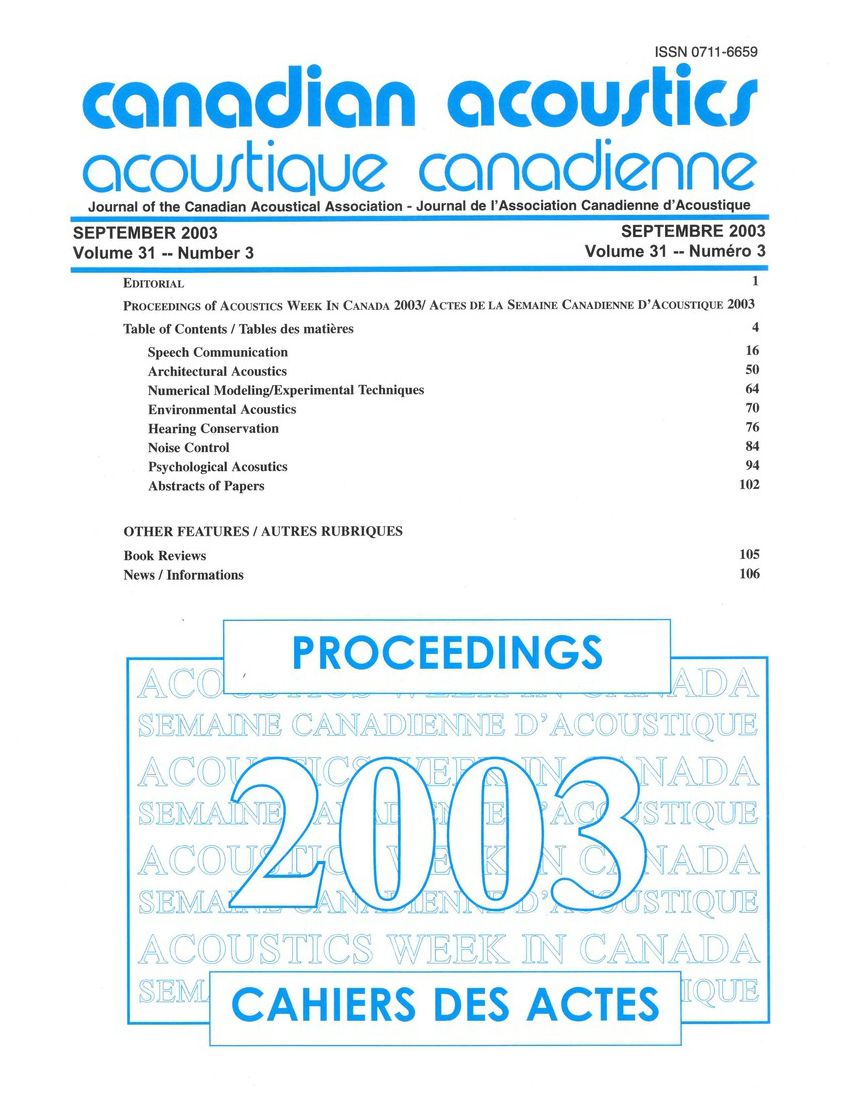On the simplifications used in mobility models to predict structureborne power flow in wood stud walls with direct-attached gypsum board
Mots-clés :
Approximation theory, Boundary conditions, Elastic moduli, Mathematical models, Natural frequencies, Screws, Stiffness, Studs (fasteners), Vibrations (mechanical), Walls (structural partitions), Wood products, Building acoustics frequency, Mobility models, Wood studRésumé
The structural power flow across a wood stud wall with direct-attached gypsum board on both ides when the screws on either side of the stud were aligned was predicted by using ordinary point force mobilities. Thus it was necessary to evaluate the mobility assumptions to determine the most appropriate method to model walls with resilient channels. This paper evaluates the assumptions regarding the vibration response of the stud and gypsum board in isolation were evaluated.Fichiers supplémentaires
Publié-e
Comment citer
Numéro
Rubrique
Licence
Author Licensing Addendum
This Licensing Addendum ("Addendum") is entered into between the undersigned Author(s) and Canadian Acoustics journal published by the Canadian Acoustical Association (hereinafter referred to as the "Publisher"). The Author(s) and the Publisher agree as follows:
-
Retained Rights: The Author(s) retain(s) the following rights:
- The right to reproduce, distribute, and publicly display the Work on the Author's personal website or the website of the Author's institution.
- The right to use the Work in the Author's teaching activities and presentations.
- The right to include the Work in a compilation for the Author's personal use, not for sale.
-
Grant of License: The Author(s) grant(s) to the Publisher a worldwide exclusive license to publish, reproduce, distribute, and display the Work in Canadian Acoustics and any other formats and media deemed appropriate by the Publisher.
-
Attribution: The Publisher agrees to include proper attribution to the Author(s) in all publications and reproductions of the Work.
-
No Conflict: This Addendum is intended to be in harmony with, and not in conflict with, the terms and conditions of the original agreement entered into between the Author(s) and the Publisher.
-
Copyright Clause: Copyright on articles is held by the Author(s). The corresponding Author has the right to grant on behalf of all Authors and does grant on behalf of all Authors, a worldwide exclusive license to the Publisher and its licensees in perpetuity, in all forms, formats, and media (whether known now or created in the future), including but not limited to the rights to publish, reproduce, distribute, display, store, translate, create adaptations, reprints, include within collections, and create summaries, extracts, and/or abstracts of the Contribution.


